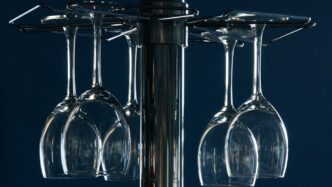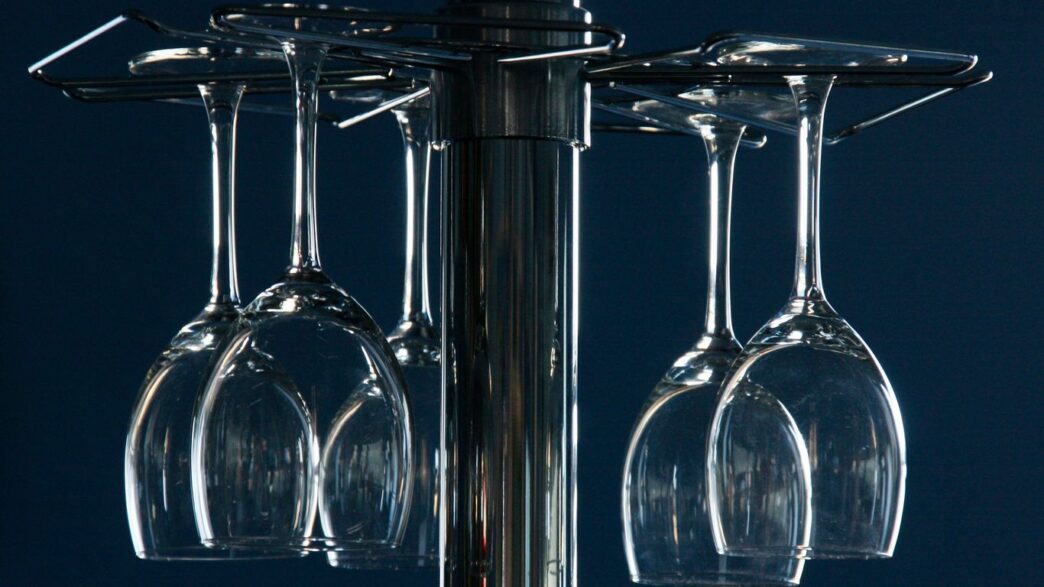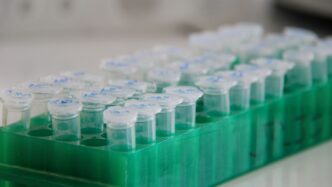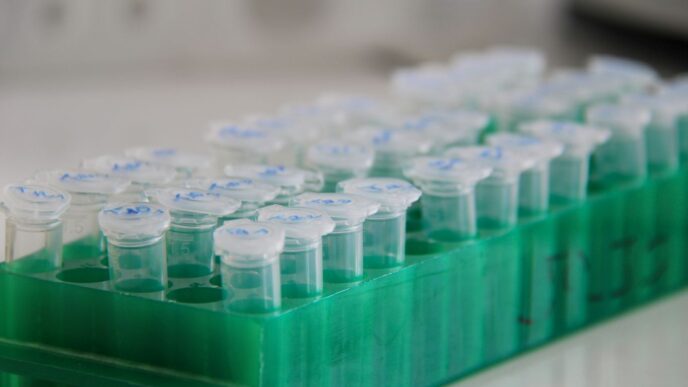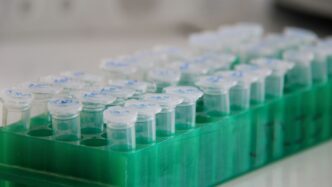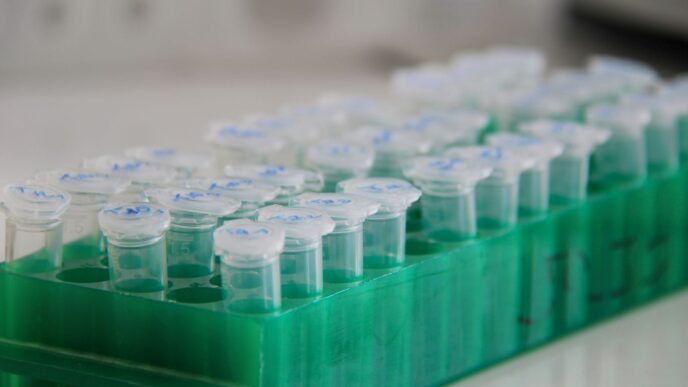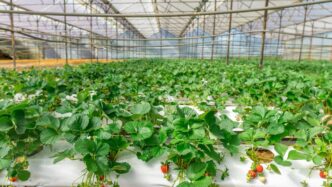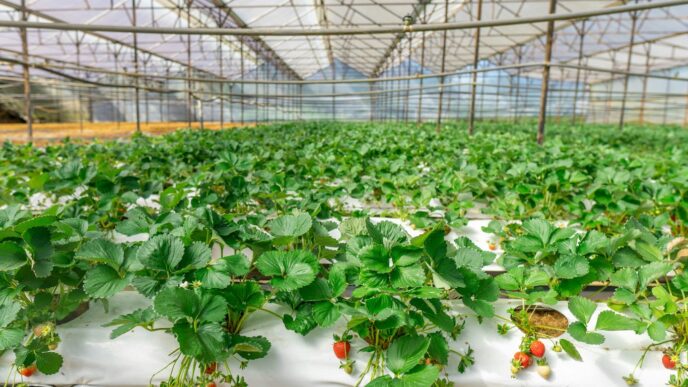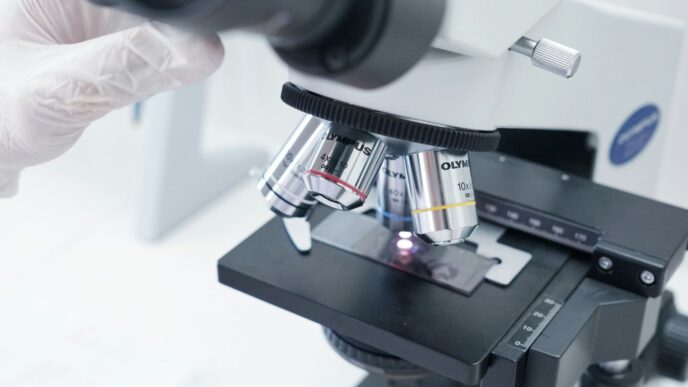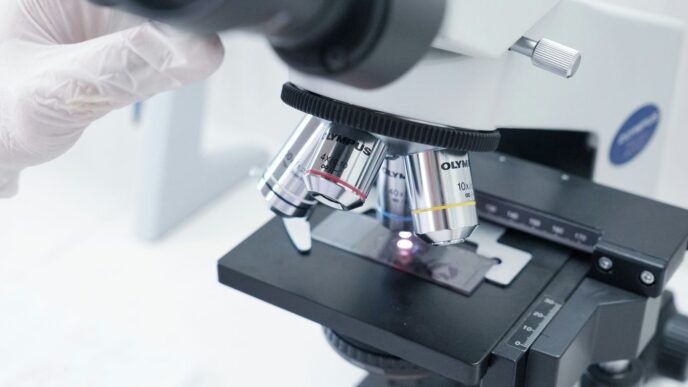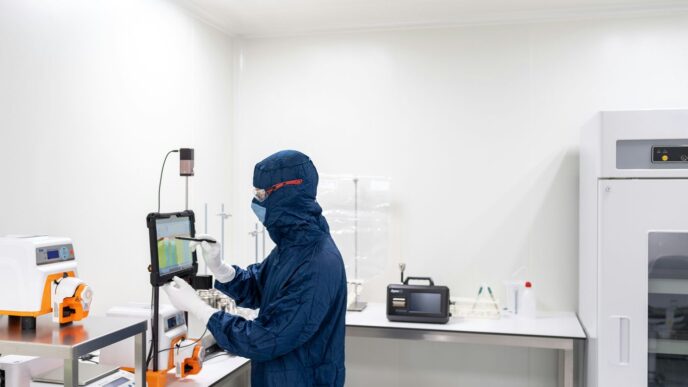When we talk about science, especially biology and medicine, you’ll often hear terms like “hypertonic” and “hypotonic.” They sound a bit technical, right? But really, they just describe how much stuff is dissolved in a liquid compared to something else. Think of it like comparing a sugary drink to plain water. Understanding the difference between hypertonic vs. hypotonic solutions is key to figuring out how cells work and why certain medical treatments are done the way they are. It’s not as complicated as it sounds, and we’ll break it down.
Key Takeaways
- A hypertonic solution has more dissolved stuff (solutes) and less water compared to another solution or a cell.
- A hypotonic solution has less dissolved stuff (solutes) and more water compared to another solution or a cell.
- When a cell is in a hypertonic solution, water moves out of the cell, causing it to shrink.
- When a cell is in a hypotonic solution, water moves into the cell, causing it to swell and potentially burst.
- Isotonic solutions have the same solute concentration as the cell, so there’s no net movement of water, keeping the cell stable.
Understanding Hypertonic vs Hypotonic Solutions

So, you’ve probably heard the terms "hypertonic" and "hypotonic" thrown around, especially when talking about science stuff like cells or even medical treatments. But what do they actually mean? It all comes down to the concentration of stuff dissolved in a liquid, called the solute. Think of it like this: you’ve got a solution, which is basically a mix of a solute (like salt or sugar) and a solvent (usually water). The amount of solute compared to the water is what makes a solution hypertonic or hypotonic.
Defining Hypertonic Solutions
A hypertonic solution is one where there’s a higher concentration of solute particles compared to another solution or, more importantly, compared to what’s inside a cell. So, if you have more dissolved stuff and less water in this solution, it’s hypertonic. This difference in concentration is a big deal because it affects how water moves.
Defining Hypotonic Solutions
Now, a hypotonic solution is the opposite. It has a lower concentration of solute particles than the other solution or the cell. This means there’s more water relative to the solute. Again, this ratio of solute to water is key to understanding what happens next.
The Role of Solute Concentration
Why all this fuss about solute concentration? Because it directly influences how water moves between different environments, especially across cell membranes. This movement of water is a fundamental process in biology. It’s how cells stay hydrated, how nutrients get around, and how waste products are removed. Understanding these concentration differences helps us figure out a lot about how living things work and how we can treat them when they’re not working so well.
How Solutions Affect Cells
So, we’ve talked about what hypertonic and hypotonic solutions are. Now, let’s get into what actually happens when cells bump into them. It’s all about water movement, and it can have some pretty big effects.
Impact of Hypertonic Solutions on Cells
Imagine a cell sitting in a solution that has way more stuff dissolved in it than the inside of the cell. Think of it like a crowded room next to an empty one, with a door that only lets people (water molecules) move from the empty room to the crowded one. In this case, the solution outside the cell is the crowded room. Water inside the cell sees all that extra stuff outside and decides to move out, trying to even things out. This outward flow of water causes the cell to shrink. For animal cells, this can make them look all shriveled up. In plants, it’s a bit different because they have a tough outer wall. The cell membrane inside pulls away from this wall, a process called plasmolysis. This is why plants wilt when they don’t get enough water – their cells lose their firmness.
Impact of Hypotonic Solutions on Cells
Now, flip that around. What if the cell is in a solution with much less stuff dissolved in it compared to the inside of the cell? This time, the water outside the cell sees the more crowded inside and decides to move in. It’s like water rushing into the cell to dilute whatever is inside. For animal cells, this can be a problem. They keep taking in water, swelling up like a balloon, and eventually, they can just burst. This is called cytolysis. Plant cells, thankfully, have that sturdy cell wall. While water still moves in and makes them swell, the wall stops them from bursting. Instead, they become firm and rigid, which is called turgid. This is what keeps plants standing up straight.
The Concept of Osmosis
All this water moving in and out of cells based on what’s dissolved around them? That’s osmosis in action. It’s a natural process where water moves across a semipermeable membrane (like a cell membrane) from an area of lower solute concentration to an area of higher solute concentration. It’s basically water’s way of trying to balance things out. It doesn’t need any energy from the cell to happen; it just goes with the flow, or rather, the concentration difference.
Here’s a quick rundown of what happens:
- Hypertonic Solution: More solutes outside the cell than inside. Water moves OUT. Cell shrinks.
- Hypotonic Solution: Fewer solutes outside the cell than inside. Water moves IN. Animal cells swell and burst; plant cells become turgid.
- Isotonic Solution: Same solute concentration inside and outside the cell. No net water movement. Cell stays the same size.
Comparing Solution Types
So, we’ve talked about hypertonic and hypotonic solutions separately. Now, let’s put them side-by-side and see how they stack up against each other, and introduce a third player: the isotonic solution.
Hypertonic vs. Hypotonic
The main difference between hypertonic and hypotonic solutions boils down to solute concentration. Think of it like this: a hypertonic solution is like a crowded room for water molecules, while a hypotonic solution is like an open field.
- Hypertonic: Has a higher concentration of solutes (like salt or sugar) compared to the inside of a cell. This means there’s less water available to move freely. When a cell is in a hypertonic solution, water tends to leave the cell to try and balance things out, causing the cell to shrink.
- Hypotonic: Has a lower concentration of solutes compared to the inside of a cell. This means there’s more water available to move freely. When a cell is in a hypotonic solution, water tends to rush into the cell, which can cause it to swell up, and in some cases, even burst.
Introducing Isotonic Solutions
Now, where does the isotonic solution fit in? Well, it’s the middle ground. An isotonic solution has the same concentration of solutes as the inside of the cell. Because the concentrations are equal on both sides of the cell membrane, there’s no significant movement of water in either direction. The cell stays pretty much the same size and shape.
Key Differences in Water Movement
To really get a handle on this, let’s look at how water moves in each scenario. It’s all about osmosis, remember? Water moves from an area of high water concentration (low solute) to an area of low water concentration (high solute).
Here’s a quick rundown:
- In a Hypertonic Solution: Water moves out of the cell. The cell loses water and shrinks.
- In a Hypotonic Solution: Water moves into the cell. The cell gains water and swells.
- In an Isotonic Solution: There’s no net movement of water. The cell stays the same.
It’s pretty neat how these different concentrations can have such a direct impact on cells, right? Understanding these differences is key to figuring out why certain treatments or processes work the way they do.
Real-World Applications
So, we’ve talked about what hypertonic and hypotonic solutions are and how they mess with cells. But where do you actually see this stuff happening outside of a science lab? Turns out, it’s pretty common, and some of it is even important for keeping us healthy or our food from going bad.
Intravenous Fluid Therapy
When someone’s sick or dehydrated, doctors often give them fluids through an IV. It’s not just a random bag of water, though. The type of solution used is super important. If a patient needs more fluid volume in their body, a hypotonic solution might be used. This means the solution has fewer solutes than the blood, so water moves into the blood cells, increasing the overall fluid. On the flip side, if there’s too much fluid in the body, like in some swelling conditions, a doctor might use a hypertonic solution. This solution has more solutes than the blood, so it pulls water out of the blood cells and into the bloodstream, helping to reduce swelling. Getting the concentration just right is key to avoid harming the patient’s cells, especially red blood cells.
Plant Cell Behavior
Plants are constantly dealing with different water concentrations in the soil and air. Think about a wilted plant. It’s usually because the plant’s cells have lost water to the environment, making them flaccid. This happens when the plant is in a hypertonic situation, where the water concentration outside the cells is lower than inside. Water moves out, and the plant wilts. On the other hand, when a plant is well-watered, its cells are plump and firm. This is because water has moved into the cells from a more dilute (hypotonic) environment, creating turgor pressure that keeps the plant upright. It’s a constant balancing act for them.
Food Preservation Techniques
You know how pickles and jams last a long time? Osmosis plays a big role in that. When you make pickles, you soak cucumbers in a really salty brine. That brine is a hypertonic solution. The high salt concentration pulls water out of the cucumber cells and also out of any bacteria that might try to grow on it. Less water inside the food and bacteria means they can’t spoil as easily. Same idea with jams and jellies – the high sugar concentration creates a hypertonic environment that makes it hard for microbes to survive. It’s a simple, old-school way of using water movement to keep food safe to eat.
Wrapping It Up
So, that’s the lowdown on hypertonic and hypotonic solutions. Basically, it all comes down to how much ‘stuff’ is dissolved in water compared to something else, usually a cell. When the solution has more dissolved stuff, it’s hypertonic, and water bails out of the cell, making it shrink. If the solution has less dissolved stuff, it’s hypotonic, and water rushes into the cell, making it swell. It’s pretty wild how these simple differences can have such a big impact, from how our bodies work to how we preserve food. Understanding this stuff helps explain a lot of everyday science, from why IV drips are carefully made to how plants stay upright. It’s not just complicated science talk; it’s happening all around us.

